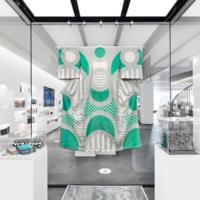If post-Fukushima nuclear disaster crisis Japan chooses to fill its energy needs with renewable energy sources, the nation will still face the same NIMBY (not-in-my-backyard) resistance to building large numbers of new facilities in the densely-populated country, an American expert said at a recent energy seminar in Tokyo.
The government is advised to take a bottom-up approach to find communities that are willing to accept wind turbines and solar power generation farms, rather than the top-down process that it used to convince farmers and fishermen into agreeing to the construction of nuclear power plants in their neighborhood over the past five decades, said Daniel P. Aldrich, an associate professor of political science at Purdue University and a Fulbright research fellow at the University of Tokyo.
Aldrich was speaking at a seminar on energy issues organized by the Keizai Koho Center on March 14, based on his research on how Japan was able to build and operate more than 50 nuclear power reactors nationwide — until the triple meltdowns hit Tokyo Electric Power Co.'s Fukushima No.?1 plant in the aftermath of the March 11, 2011, Great East Japan Earthquake.


















With your current subscription plan you can comment on stories. However, before writing your first comment, please create a display name in the Profile section of your subscriber account page.